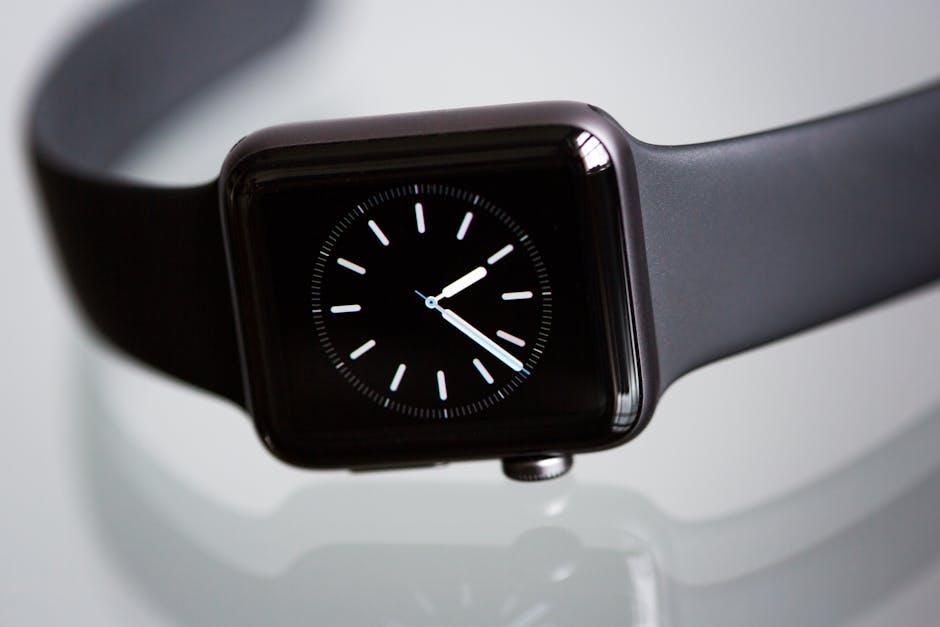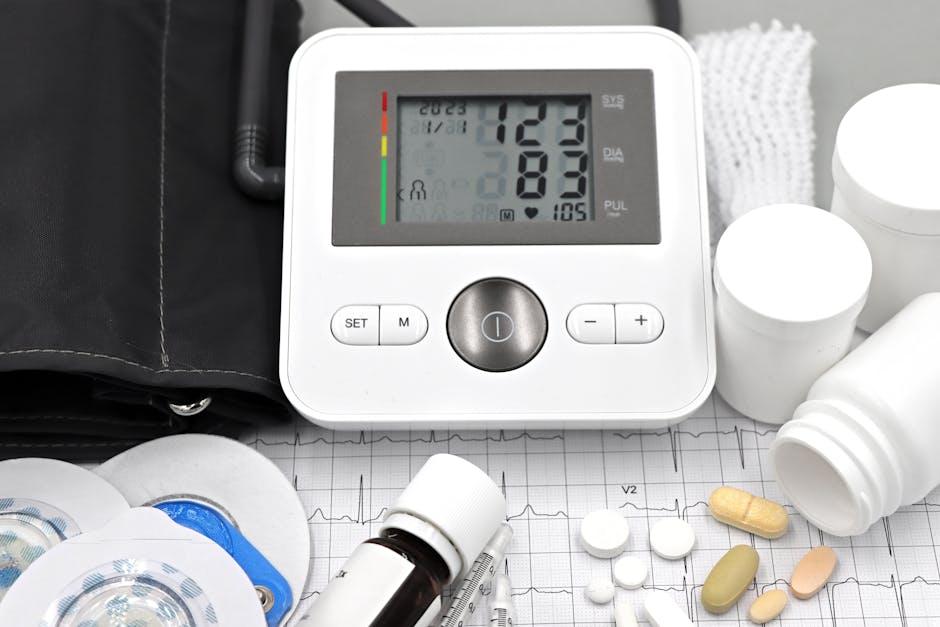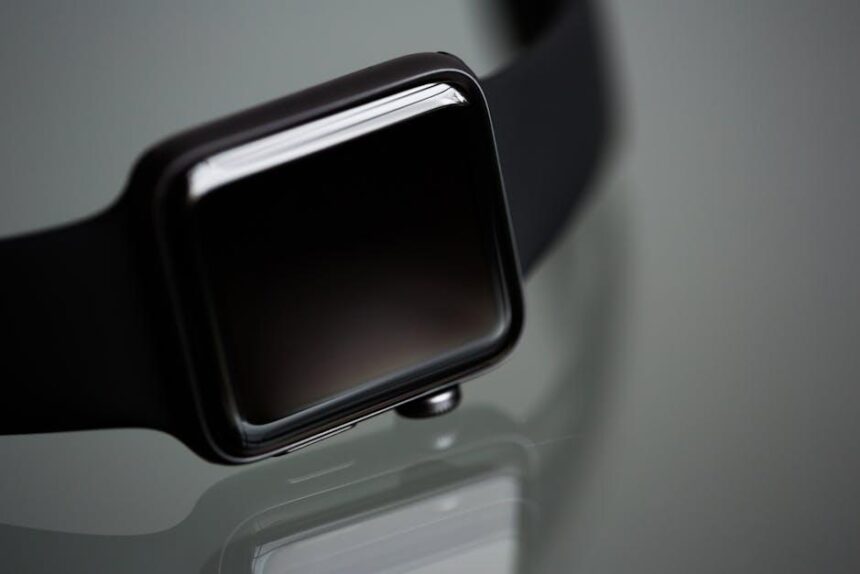In an age where technology meets health, monitoring your heart’s rhythm has never been more accessible. The ECG app on the Apple Watch puts the power of heart health right at your wrist, enabling users to effortlessly track their cardiovascular status. With just a touch, this innovative feature provides insights into your heart’s rhythm, helping you identify potential issues like atrial fibrillation early on. As heart diseases continue to be a leading cause of mortality globally, tools such as the ECG app empower individuals to take proactive steps in managing their cardiovascular health. Join us as we explore how this app not only enhances your understanding of your heart but also supports you in mastering your overall heart health journey.
Understanding ECG Technology for Better Heart Health
Understanding the technology behind the ECG (ElectroCardioGram) can significantly elevate your approach to heart health. The ECG app on your Apple Watch offers a simple yet powerful way to monitor your heart’s electrical activity right from your wrist. Here’s how it works:
- Real-Time Monitoring: The ECG app uses electrodes embedded in the Apple Watch to measure your heart’s electrical signals. This allows you to capture an ECG waveform instantly.
- Arrhythmia Detection: It can identify irregular heart rhythms, such as atrial fibrillation (AFib), which is crucial as AFib can lead to serious complications if left untreated.
- User-Friendly Interface: The app guides you through the process, ensuring you can record your ECG with ease. Just touch the Digital Crown, and within 30 seconds, you’ll have your reading.
- Data Storage: Your readings are stored in the Health app, enabling you to track trends over time and share them with your healthcare provider.
- FDA-Cleared: This technology has received FDA clearance, signifying its efficacy and safety for personal health monitoring.
The ECG app can be instrumental in identifying potential health issues early. Here’s a quick look at some essential features:
| Feature | Description |
|---|---|
| ECG Recording | Quick recordings that take just 30 seconds. |
| AFib Detection | Alerts you if an irregular heart rhythm is detected. |
| Export Data | Easy sharing options for your ECG data with healthcare providers. |
| Trend Analysis | Track your heart health over time through historical data. |
By integrating the ECG app into your daily routine, you gain valuable insights into your heart health. Regular monitoring can facilitate proactive discussions with your healthcare provider, ultimately leading to better outcomes. Whether you’re managing existing conditions or simply interested in improving your heart health, the ECG app serves as a vital tool in your health management toolkit.

Navigating the ECG App Features for Optimal Use
Using the ECG app on your Apple Watch can transform how you monitor your heart health. Here’s how to navigate its features for the best results:
- Setup & Compatibility: Ensure your Apple Watch is Series 4 or later, and that it’s paired with an iPhone that supports the ECG app. Update to the latest watchOS for optimal functionality.
- Easy Access: Open the ECG app from your watch face or app list. It’s designed for quick access, allowing you to start a reading in seconds.
- Taking an ECG: Simply place your finger on the Digital Crown. The watch will measure your heart’s electrical signals, and the reading takes about 30 seconds.
- Reading Results: After completing the test, the app displays the results: Normal Sinus Rhythm, Atrial Fibrillation (AFib), or an inconclusive result. Familiarize yourself with these indicators to understand your heart health better.
- Historical Data: The ECG app stores previous recordings. Regularly reviewing your past data can help you and your healthcare provider track changes over time.
- Sharing Data: Use HealthKit to easily share your ECG results with your doctor. A simple tap allows you to export data as a PDF, facilitating effective communication.
- Notifications: Enable notifications for irregular heart rhythm updates. This feature can alert you if your heart rate shows any unusual patterns, providing peace of mind.
| Feature | Description |
|---|---|
| ECG Measurement | 30-second test measuring heart electrical signals. |
| Result Types | Normal Sinus Rhythm, Atrial Fibrillation, and Inconclusive. |
| Historical Recordings | Access and review historical ECG data. |
| PDF Sharing | Export ECG readings to share with healthcare providers. |
| Irregular Rhythm Notifications | Alerts for unusual heart rhythms in real time. |
By using these features effectively, you can take proactive steps in managing your heart health, ensuring that you’re equipped with essential heart data, right at your fingertips.

Interpreting Your ECG Readings: What They Mean for You
When you look at your ECG readings from the Apple Watch, understanding what they mean can empower you to take control of your heart health. Here’s a breakdown of what common components of your ECG readings signify, directly impacting your health and wellness.
- Heart Rate (HR): This metric shows how many times your heart beats per minute. A resting heart rate typically ranges from 60 to 100 beats per minute. If you notice unusually high or low readings, consider consulting a healthcare provider.
- Heart Rhythm: This refers to the pattern of your heartbeats. Normal rhythm is often represented as a regular, consistent beat. Irregular rhythms, identified as arrhythmias, can be flags to seek medical advice.
- ECG Waveforms: The ECG produces different waveforms (P, QRS, T waves) that depict electrical activity. Understanding these can inform you of potential heart issues, such as hypertrophy or ischemia.
- Baseline Stability: The baseline in your ECG is crucial. A stable baseline indicates that the heart is in a resting state, allowing for accurate measurement of other waveforms. If it’s fluctuating, it might mean noise in the reading that requires further investigation.
Common Indications from Your ECG Readings
| Condition | ECG Reading Characteristics | Suggested Actions |
|---|---|---|
| Normal | Regular, consistent rhythm, within standard HR range | Maintain healthy lifestyle; regular check-ups |
| Bradycardia | HR < 60 bpm, potential irregular rhythms | Seek medical advice; possible investigation |
| Tachycardia | HR > 100 bpm, may indicate stress/anxiety | Consult healthcare provider for assessment |
| Arrhythmia | Irregular heart rhythms | Time to connect with a doctor; monitoring may be required |
Utilizing the ECG app not only helps in tracking your heart health but also serves as a proactive measure. Regular monitoring can inform necessary lifestyle changes or medical consultations, ensuring that your heart remains well cared for.
Remember, while your Apple Watch provides you with valuable data, it’s essential to interpret these findings in collaboration with healthcare professionals for the best outcomes.

Integrating Heart Health Monitoring into Your Daily Routine
is easier than ever, especially with the ECG app on your Apple Watch. Embracing this technology allows you to keep a finger on the pulse of your heart health, providing valuable insights and empowering you to make informed decisions. Here are some effective ways to weave heart monitoring seamlessly into your everyday life:
- Set Daily Reminders: Program your Apple Watch to remind you to check your heart rate at specific times throughout the day. This consistent monitoring will help you notice any unusual patterns.
- Use Heart Rate Alerts: Activate alerts for high or low heart rates. The Apple Watch will notify you immediately, allowing you to take action if needed.
- Track Your Activity Levels: Monitor your exercise frequency and intensity with the ECG app, ensuring you stay within healthy limits while pushing for improvement.
- Record Symptoms: If you experience palpitations, dizziness, or chest discomfort, document these moments in the app. This information will be invaluable for your healthcare provider.
- Integrate with Health Data: Sync your ECG app data with the Apple Health app. This provides a comprehensive overview and can assist in identifying trends over time.
Making these practices habitual can greatly enhance your understanding of your heart’s health. Here’s a quick overview of how to set up your ECG app for daily use:
| Step | Action |
|---|---|
| 1 | Open the ECG app on your Apple Watch. |
| 2 | Follow the prompts to start a reading. |
| 3 | Save the reading and review historical data as needed. |
| 4 | Configure settings for notifications and alerts. |
| 5 | Regularly check sync settings with the Apple Health app. |
Furthermore, consider engaging in lifestyle choices that support heart health:
- Nutrition: Adopt a balanced diet rich in fruits, vegetables, whole grains, and lean proteins.
- Exercise: Aim for at least 150 minutes of moderate-intensity aerobic activity weekly.
- Stress Management: Incorporate mindfulness or relaxation techniques to keep your stress levels in check.
- Regular Check-ups: Maintain regular appointments with your healthcare provider to discuss your heart health and monitor any changes.
By prioritizing your heart health and utilizing the features of the ECG app on your Apple Watch, you not only gather critical data about your cardiovascular fitness but also foster an overall healthier lifestyle. Invest the time and effort into monitoring your heart health, and you are likely to see the benefits in both the short and long term.

The Way Forward
As we navigate the intricate landscape of heart health, the ECG app on your Apple Watch emerges as a vital tool, empowering you to take charge of your well-being with unprecedented ease. With each heartbeat recorded, you gain not only insights into your heart’s rhythm but also the ability to make informed decisions about your health. Whether you’re monitoring your fitness or managing existing conditions, this innovative technology transforms your wrist into a gateway to greater awareness and proactive care. Embrace the journey towards a healthier heart, equipped with the knowledge and tools the ECG app provides. Let each reading guide you, and remember: in the quest for heart health, knowledge is not just power-it’s life.














